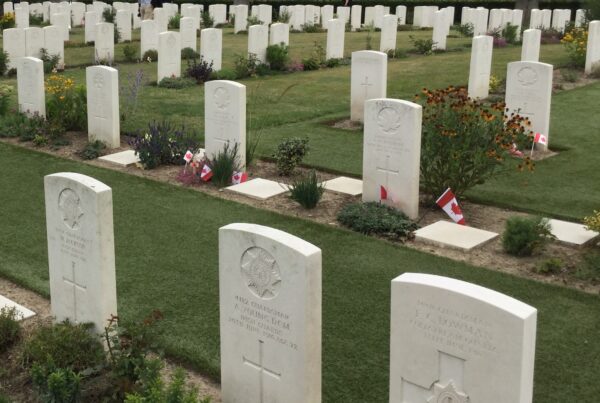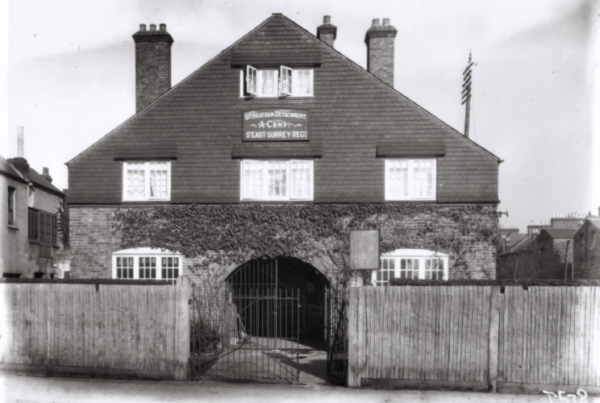The civilian military response to clear and present danger
in September 1914 and May 1940
By Major (retired) Derrick Harwood MBE TD, Author and GL RFCA Historian
Volunteer Training Corps September 1914 – December 1918
Erskin Childers who served with the HAC in the South African war wrote a book in 1903 with the title ‘The Riddle of The Sands’. The book was intended as a warning to the British that the German army had set aside up to 80,000 troops specifically for an invasion of the South Coast should the need for such action arise.
In August 1914 the forces of the crown mobilised in response to the German invasion of Belgium. It had taken years of planning and preparation for such an event and when the call came, both Regular Forces and Reserves mobilised in 3 days. However, such was the demand for men that the Territorial Force (later known as the Territorial Army) were being asked to abandon their Home Defence role for service overseas. Who then would take on the burden of defending the homeland? The Coastal Batteries would remain in the hands of the Special Reserve and the Territorial units of the Royal Garrison Artillery, but guarding Key Points such as railways, factories and military installations with regular troops in the UK still under training, would be a heavy price to pay in both manpower and training time.
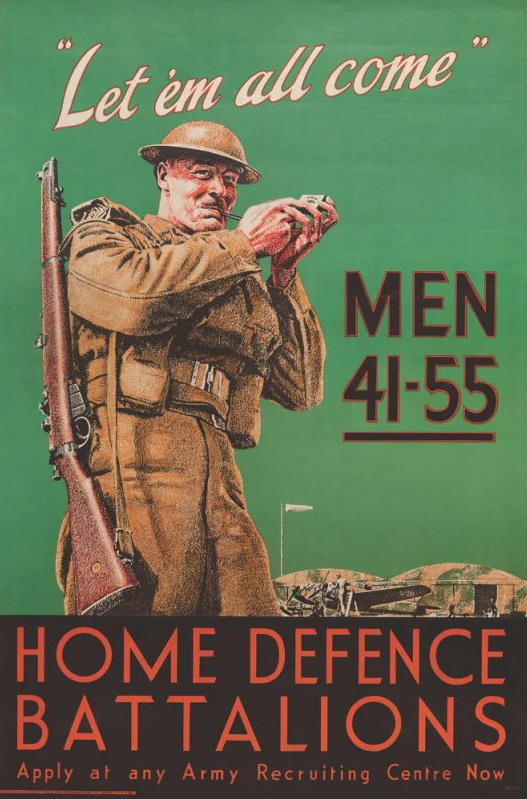
This well-known poster ‘Let ’em all come’ shows an obviously older man but well equipped to do the job
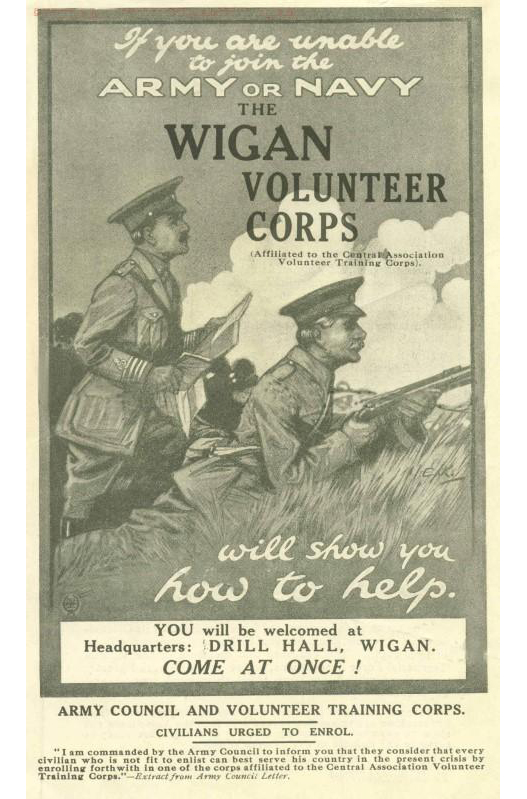
One of the first professional recruiting posters issued by a local authority probably about 1917
There were however, members of the public who almost from the start of the war took matters into their own hands by forming groups of volunteers for key point duties acting under the direction of what was known as the ‘Central Association of Volunteer Training Corps’. This alarmed the government but there was little they could do to stop it. There was now an urgent need to regulate the activities of the Volunteer Training Corps (VTC) and on November 19th 1914 the government introduced regulations that included the volunteers wearing an armband with the letters ‘GR’ standing for ‘George Rex’. The work of the Civilian Volunteers was now official.
The Government also directed that the organisation should be brought together under the name of ‘The Volunteer Training Corps’ but were mindful that membership of the VTC would not mean exemption from service in the army nor would there be any financial support from the public purse. In addition to the arm band a uniform dress was permitted under the condition that such uniforms would not be of British Army colour or pattern, nor would army ranks be used. Weapons would be purchased at the owner’s expense.
The VTC was from then on organised on a county basis with administrative support overall provided by the ‘Central Committee of the London Volunteer Defence Force’ with Headquarters in Finsbury Barracks.
By 1917 the value of the VTC was recognised by both Government and the War Office facilitating a change of attitude and the restrictions on uniform,ranks and the self-purchase of military equipment were swept away as the VTC came under the control of the War Office. However, the volunteer still had to prove
that for whatever reason he was unable to serve in the Regular Forces.
The membership of VTC stood at 243,800 when it was suspended in December 1918. The organisation was disbanded in January 1920.
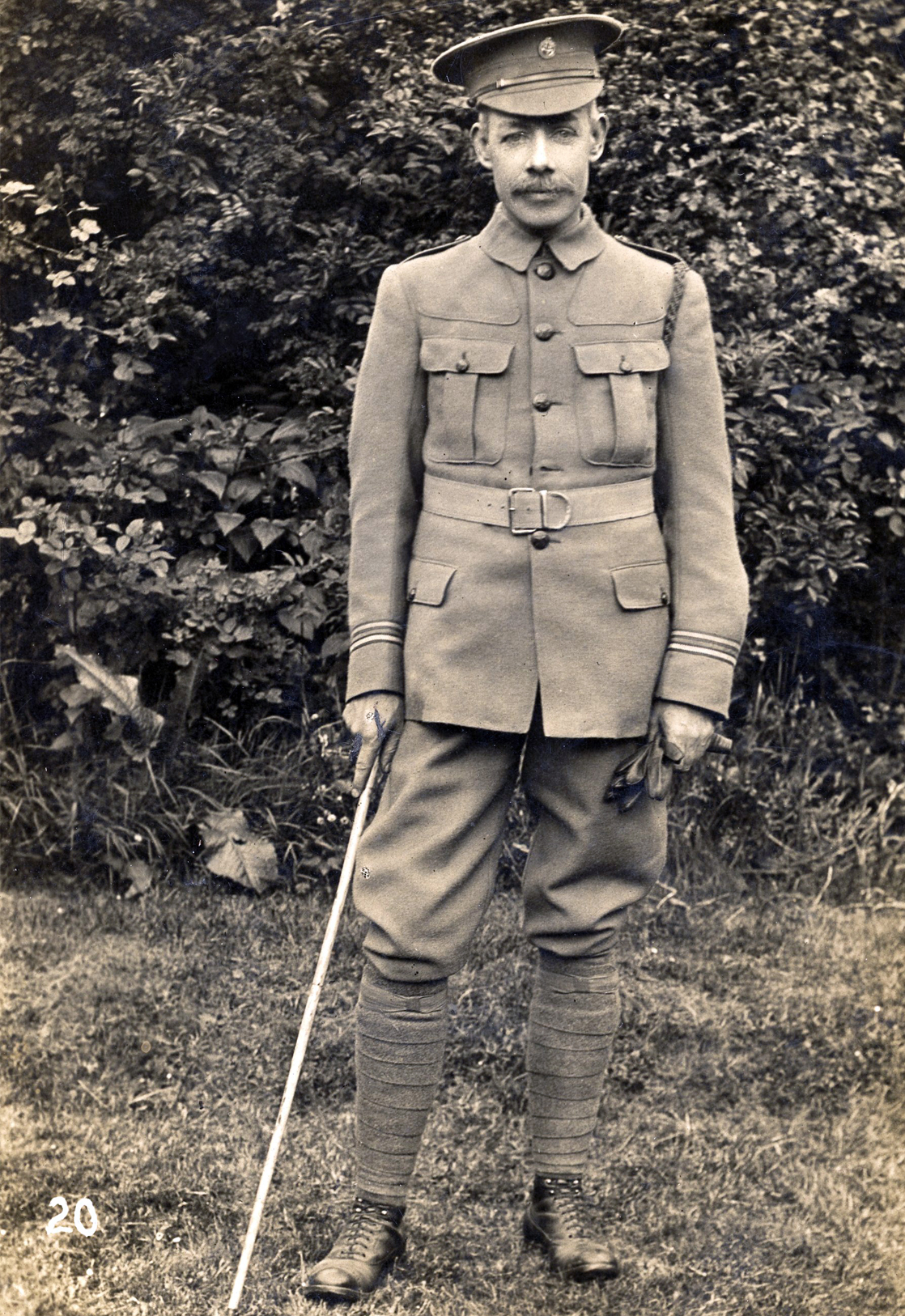
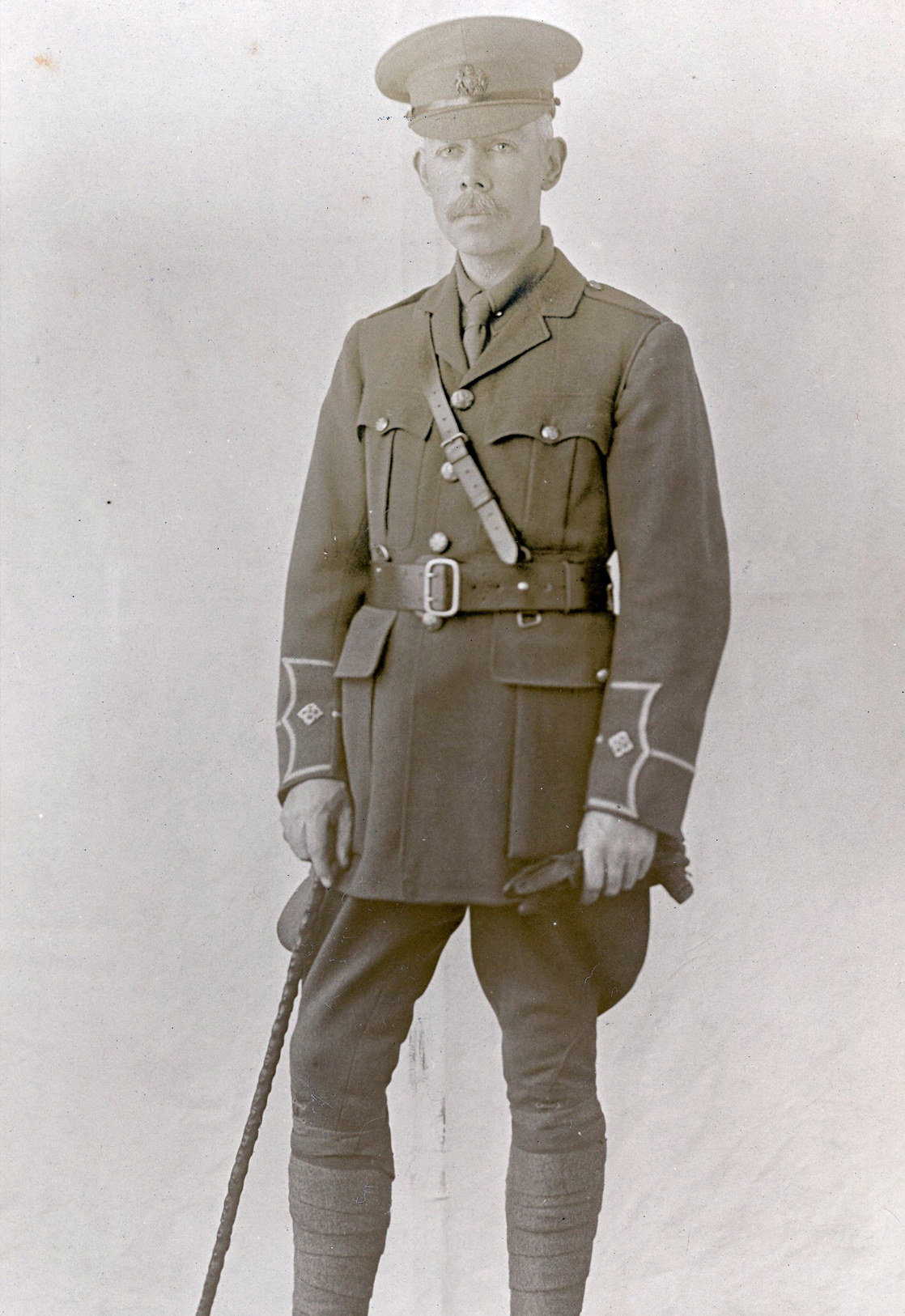
Left: an officer of the VTC wearing the pre 1917 uniform of the Corps. Right: the same officer in British Army uniform after the government made the VTC a Reserve of the British Army. Family photographs used by kind permission of Julia Pringle
There were however, members of the public who almost from the start of the war took matters into their own hands by forming groups of volunteers for key point duties acting under the direction of what was known as the ‘Central Association of Volunteer Training Corps’. This alarmed the government but there was little they could do to stop it. There was now an urgent need to regulate the activities of the Volunteer Training Corps (VTC) and on November 19th 1914 the government introduced regulations that included the volunteers wearing an armband with the letters ‘GR’ standing for ‘George Rex’. The work of the Civilian Volunteers was now official.
The Government also directed that the organisation should be brought together under the name of ‘The Volunteer Training Corps’ but were mindful that membership of the VTC would not mean exemption from service in the army nor would there be any financial support from the public purse. In addition to the arm band a uniform dress was permitted under the condition that such uniforms would not be of British Army colour or pattern, nor would army ranks be used. Weapons would be purchased at the owner’s expense.
The VTC was from then on organised on a county basis with administrative support overall provided by the ‘Central Committee of the London Volunteer Defence Force’ with Headquarters in Finsbury Barracks.
By 1917 the value of the VTC was recognised by both Government and the War Office facilitating a change of attitude and the restrictions on uniform,ranks and the self-purchase of military equipment were swept away as the VTC came under the control of the War Office. However, the volunteer still had to prove
that for whatever reason he was unable to serve in the Regular Forces.
The membership of VTC stood at 243,800 when it was suspended in December 1918. The organisation was disbanded in January 1920.


The Home Guard from in Broomsticks 1940 to Buckingham Palace Guard Mounting 20th May 1943
In September 1939 Great Britain declared war on Germany and after the retreat from Dunkirk there was a real danger of full-scale invasion. The German Army planned to launch ‘Operation Sea Lion’ as soon as the Luftwaffe had air superiority. The need for a substantial home defence force was obvious and on 14th May 1940 Home Secretary Anthony Eden announced on BBC radio that the government would raise a Home Defence Force, the ‘Land Defence Volunteers’ (LDV). Men between 17 and 65 were urged to join at their local Police Station. Over 250,000 signed on within seven days.
It had a difficult start as the priority was to replace and re-equip the regular army after the losses at Dunkirk. Thus, rumours started that come the invasion the LDV would face the mighty Wehrmacht with broom sticks. In fact, the broomsticks were a temporary substitute for rifles and were only ever used for Drill Parades. It was true however that 10,000 pikes were manufactured, but this was widely considered an insult to the new reserve and the pikes were never issued.
On 22nd July 1940 Winston Churchill ordered the name be changed to the more military sounding ‘Home Guard’. As with the VTC in the first World War, the Territorial Associations were heavily involved in the development of the Home Guard, organised on a local battalion basis with many‘Utility units’ whose duties were the security of workplaces such as transport depots, electricity supply companies, coal mines and railways. Many south coast Anti-Aircraft sites were manned by the Home Guard.In December 1941 women were admitted to carry out administrative tasks.
In 1942, now fully equipped, the Home Guard could provide initial training for recruits waiting to be called up for regular service. On 20th May 1943 the Home Guard took over the Guard Mounting outside Buckingham Palace.
In December 1944 the Home Guard, now numbering 1.7 million men and women, was ‘stood down’ but not disbanded. Members who had served a minimum of three years could apply for the Defence Medal. 760 Home Guardsmen were killed, mainly in the London Blitz.
Post-war they remained in various forms and provided a marching detachment in the 1953 Coronation procession. The Home Guard was finally disbanded in 1960.



